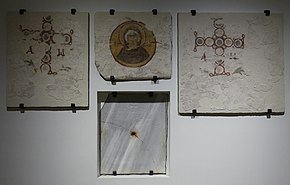| Key event(s): |
 |
| Chronology: |
|
| History of Lebanon |
|---|
 |
| Timeline |
|
|
This article lists historical events that occurred between 401–500 in modern-day Lebanon or regarding its people.

Constantine's province of Augusta Libanensis was short-lived, but formed the basis of the re-division of Phoenice c. 400 into the Phoenice I or Phoenice Paralia (Greek: Φοινίκη Παραλία, "coastal Phoenice"), and Phoenice II or Phoenice Libanensis (Lebanese Phoenicia);(Φοινίκη Λιβανησία), with Tyre and Emesa as their respective capitals.[1] In the Notitia Dignitatum, written shortly after the division, Phoenice I is governed by a consularis, while Libanensis is governed by a praeses, with both provinces under the Diocese of the East.[2] Only two governors of Phoenice were known from the reign of Theodosius II (408–450) to that of Justin I (518–527).[3]





The ecclesiastical administration paralleled the political, but with some differences. When the province was divided c. 400, Damascus, rather than Emesa, became the metropolis of Phoenice II. Both provinces belonged to the Patriarchate of Antioch, with Damascus initially outranking Tyre, whose position was also briefly challenged by the see of Berytus c. 450; after 480/1, however, the Metropolitan of Tyre established himself as the first in precedence (protothronos) of all the Metropolitans subject to Antioch.[37]
| Dates
(uncertain dates in italic) |
Names
(uncertain names in italic) |
| 400–410, 438 | Cyrillus |
| 420–450 | Patricius |
| 450–490 | Domninus |
| Demosthenes | |
| Eudoxius | |
| May–June 460 | Euxenius |
| 480–500 | Amblichus |
| Before 487/488 – |
Leontius |
| End of the 5th century, early 6th century | Sabinus |
| Anonymous, mentioned in the Scholia Sinaitica |